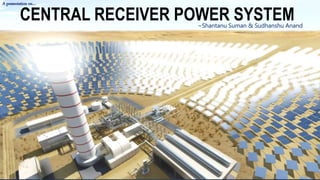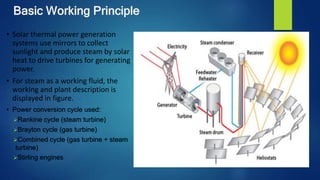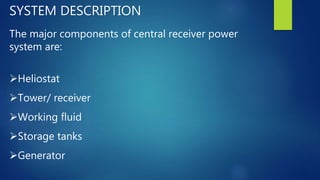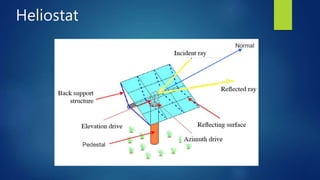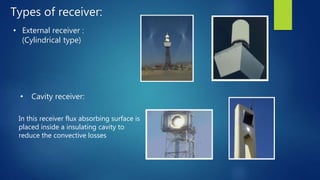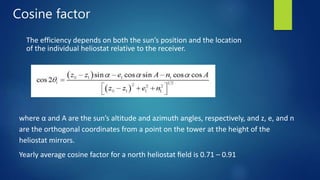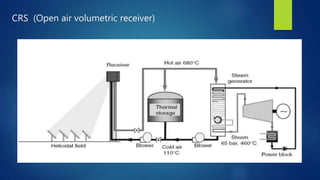Central receiver power systems use a large field of mirrors called heliostats to reflect sunlight to a central receiver tower. The concentrated sunlight is used to heat a working fluid like water/steam to high temperatures, which is then used to drive a turbine and generate electricity. A central receiver power plant in California demonstrated this technology, using over 1800 heliostats covering 72 acres to produce steam at 516°C and generate up to 42 MW of power. Central receiver systems can achieve high operating temperatures above 600°C, have good potential for thermal energy storage, and have been commercially demonstrated. However, they also have drawbacks like high construction costs and requiring significant land area.
